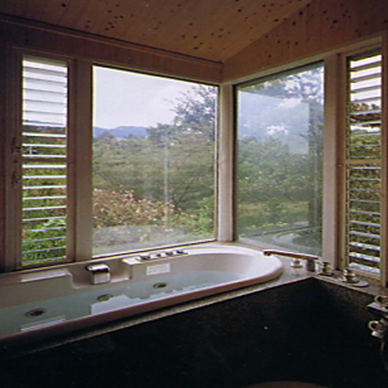Understanding Modern Glass Solutions in Architecture
The evolution of architectural glass has revolutionized building design, offering solutions that go far beyond basic transparency and aesthetics. As building codes become more stringent and safety requirements more complex, the distinction between different types of architectural glass has never been more critical. Today's architects and builders must navigate between fire-rated and safety glass options, each serving unique purposes in modern construction.
The selection of appropriate architectural glass impacts not only the visual appeal of a structure but also plays a crucial role in occupant safety and building code compliance. Understanding these differences enables better decision-making in construction projects and ensures optimal protection for building occupants.
The Fundamentals of Fire-Rated Glass
Composition and Manufacturing Process
Fire-rated architectural glass undergoes specialized manufacturing processes that enhance its ability to withstand extreme temperatures. Multiple layers of glass are typically combined with fire-resistant interlayers, creating a robust barrier against flames and heat. The composition often includes special intumescent materials that expand when exposed to high temperatures, forming an opaque barrier that blocks both fire and heat transmission.
The manufacturing process involves precise temperature control and quality testing to ensure each panel meets strict fire-resistance standards. These panels undergo rigorous testing to achieve their fire ratings, which can range from 20 minutes to over 3 hours of protection.
Performance Characteristics
Fire-rated glass exhibits unique characteristics that distinguish it from standard architectural glass. When exposed to flames, it maintains its structural integrity while preventing the spread of fire and smoke. This type of glass is designed to remain in place even when cracked, providing crucial time for building evacuation.
The performance of fire-rated glass is measured not only by its ability to block flames but also by its capacity to reduce heat transfer. Advanced versions can limit radiant heat transmission, offering enhanced protection for occupants and property near the glass installation.

Safety Glass Specifications and Applications
Types of Safety Glass
Safety architectural glass encompasses several varieties, each designed for specific applications. Tempered glass, four to five times stronger than standard glass, breaks into small, rounded pieces rather than sharp shards. Laminated glass, another common safety option, consists of glass layers bonded with polyvinyl butyral (PVB) interlayers, holding fragments together upon impact.
Impact-resistant glass combines multiple layers of strengthened glass with robust interlayers, providing protection against both accidental impact and intentional force. This makes it particularly suitable for areas prone to severe weather or requiring enhanced security.
Installation Requirements
Installing safety architectural glass demands precise attention to detail and specific mounting systems. The framework must adequately support the glass weight while allowing for thermal expansion and building movement. Proper glazing techniques ensure the glass performs as intended during impact events.
Professional installation is crucial, as improper mounting can compromise the glass's safety features. Installers must follow manufacturer specifications and local building codes to maintain warranty coverage and ensure optimal performance.
Comparative Analysis of Protection Features
Impact Resistance Properties
While both types of architectural glass offer protection, their impact resistance characteristics differ significantly. Safety glass excels in protecting against physical impact, preventing injury from broken glass. It's designed to either remain intact upon impact or break safely, making it ideal for areas with high human traffic.
Fire-rated glass, while also offering some impact resistance, primarily focuses on fire protection. Its impact resistance is a secondary feature, designed mainly to maintain integrity during fire conditions rather than protect against daily physical impacts.
Environmental Response
Environmental factors affect these glass types differently. Safety glass maintains its properties across various temperature ranges and weather conditions, making it suitable for exterior applications. It can withstand thermal stress and sudden temperature changes without compromising its protective features.
Fire-rated glass, however, is specifically engineered to respond to extreme heat conditions. Its environmental performance focuses on fire scenarios, though modern versions also consider factors like UV radiation and moisture exposure.
Cost Considerations and Long-term Value
Initial Investment Analysis
The initial cost of architectural glass varies significantly between fire-rated and safety options. Fire-rated glass typically commands a premium price due to its specialized manufacturing process and testing requirements. The cost increases with higher fire ratings and larger panel sizes.
Safety glass, while more expensive than standard glass, generally costs less than fire-rated alternatives. The price varies based on the specific type and treatment process, with laminated and impact-resistant versions commanding higher prices than basic tempered glass.
Maintenance and Longevity
Long-term maintenance requirements differ between these glass types. Safety glass typically requires standard cleaning and periodic inspection for damage. Its durability often results in lower replacement rates and maintenance costs over time.
Fire-rated glass requires more specialized maintenance to ensure its fire-resistant properties remain intact. Regular inspections must verify the integrity of seals and mounting systems, though routine cleaning requirements are similar to standard glass.
Frequently Asked Questions
Can fire-rated glass also function as safety glass?
Some fire-rated glass products are designed to meet both fire protection and safety standards. However, not all fire-rated glass automatically qualifies as safety glass. It's essential to verify that the selected product meets both requirements if dual functionality is needed.
How long does architectural glass typically last?
With proper installation and maintenance, both fire-rated and safety architectural glass can last 20-30 years or more. However, regular inspections are crucial to ensure ongoing performance, especially for fire-rated installations.
What determines the required type of glass for a project?
Building codes, occupancy type, location within the building, and specific safety requirements determine the necessary glass type. Factors include fire separation requirements, impact safety needs, and local building regulations. Consulting with architectural professionals and code officials is essential for proper selection.
